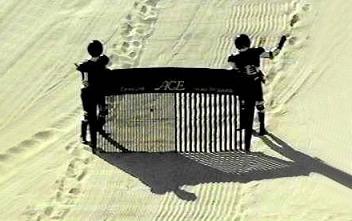
In Part I, I listed some questions about malnutrition that I think you’d have to answer to have any sense of what you’re accomplishing with your donation, and how it compares to your other options. I then went on a search – similar to what we did part-time before we started GiveWell – to see what sorts of answers, and organizations, I could easily find.
Googling “Charity Malnutrition” doesn’t turn up anything that looks like an obvious first choice, and results from a Charity Navigator search for “malnutrition” provide nine organizations, five of which serve people in the United States.
We’ve already looked closely at Helen Keller International (click for more info), and the mission for the Children’s Shelter of Cebu doesn’t sound like what I’m looking for. This leaves Curamericas Global and Esperanca, two organizations that, based on their mission statements available on Charity Navigator have extremely broad mandates to improve health in the developing world. I chose to look into Esperanca.
Esperanca is a relatively small organization, with expenses, according to its 2006 IRS Form 990 (free registration required at Guidestar) in 2006 of $1.8 million.
Esparanca’s website provides information on their ongoing projects in Bolivia, Mozambique, and Nicaragua. The programs in Mozambique and Nicaragua explicitly address malnutrition:
- Mozambique: “In conjunction with Care for life, our public health programs in Mozambique include:Teaching community members how to make sure their families are receiving enough food”
- Nicaragua: “One of our foremost public health concerns in Nicragua is nutrition. We provide the necessary supplies and training to families and community groups to start neighborhood gardens. These gardens grow quickly and supplement traditional diets with much needed fruits and vegetables. Malnutrition accounts for 54% of all deaths of children under age five, (WHO).”
Esparanca’s Annual Report doesn’t add any information about the programs in these two countries.
The only program related information in Espranca’s 2006 IRS Form 990 is in response to the IRS requirement (in Part III) that “all organizations must describe their exempt purpose achievements in a clear and concise manner.” Esparanca responds, “Provide medical services and public health programs in the poorest areas of the world throughout North America, South America, and Africa, serving 100,000 people.” (Box a)
Given that information, I’m left with a set of unanswered questions. I emailed these questions to Esperanca (they responded yesterday, though we aren’t going to post their response until/unless we get their permission). The questions that follow apply to both programs, except where noted:
- Is the problem “receiving enough food” or receiving the right types of food (Mozambique)?
- What does Esperanca teach community members? Which foods to plant? How to cultivate and plant them?
- How often do they hold classes and how long each does each last?
- How well do community members retain and implement what they’re taught?
- What nutrients do the foods contain and how does this match up to the nutrients community members likely lack?
- How effectively does this program reduce malnutrition of specific nutrients?
- What effect does this have on the outcomes (e.g., mortality rate, general health, I.Q.) of community members?
- How many people do they help?
- How much does this program cost?
Note that these questions aren’t just about the scientific/factual details of malnutrition; they’re about the organization’s competence, effectiveness, and even philosophical priorities. It seems clear that two equally legitimate and well-meaning organizations could produce wildly different answers to them, and thus could be diverging wildly in terms of how what they do fits with my goal of helping people. That’s why I think it’s important to answer them. And I can’t find answers anywhere on the website, Annual Report, or tax forms.
I also checked out CARE’s nutrition page, but it does not help with the questions above. CARE’s website has a searchable database of ongoing projects, but the example project I looked at only provided information on the country in which the project takes place, the goal, and the broad method for implementation (in this case, flour fortification). That’s all somewhat helpful, but in order to donate to this CARE project, I’d have to do a lot of independent research along the lines of the questions I listed above.
My intent here isn’t to criticize the charities above – the information they’re giving may have more to do with what’s being asked for than with what they have. But regardless, the fact remains – if I want to help people with malnutrition, at this point I seem to be stuck. Without more research, my only option is blind faith.

Comments
this seems like a particularly germane cause to target to those specific countries or regions that are now being trounced because their nutrition intake was based on formerly cheap staple(s) like rice or other grain where costs have skyrocketed in the last few years.
Comments are closed.